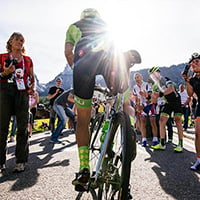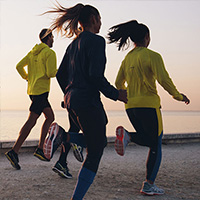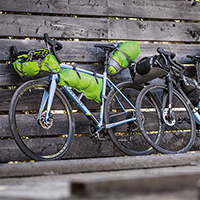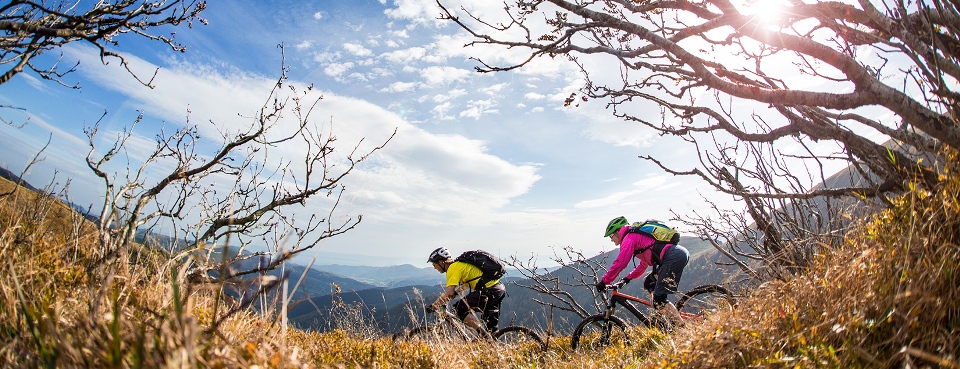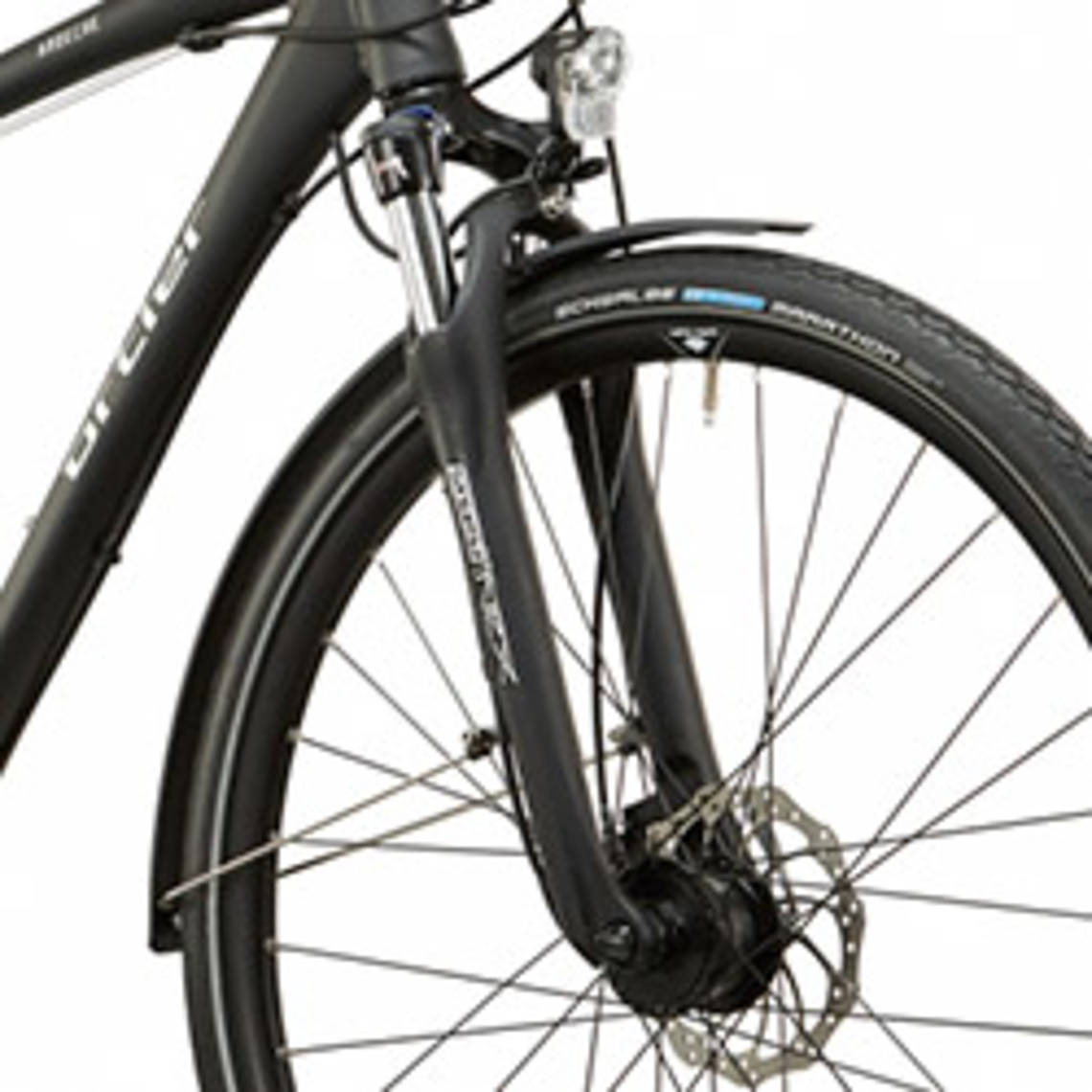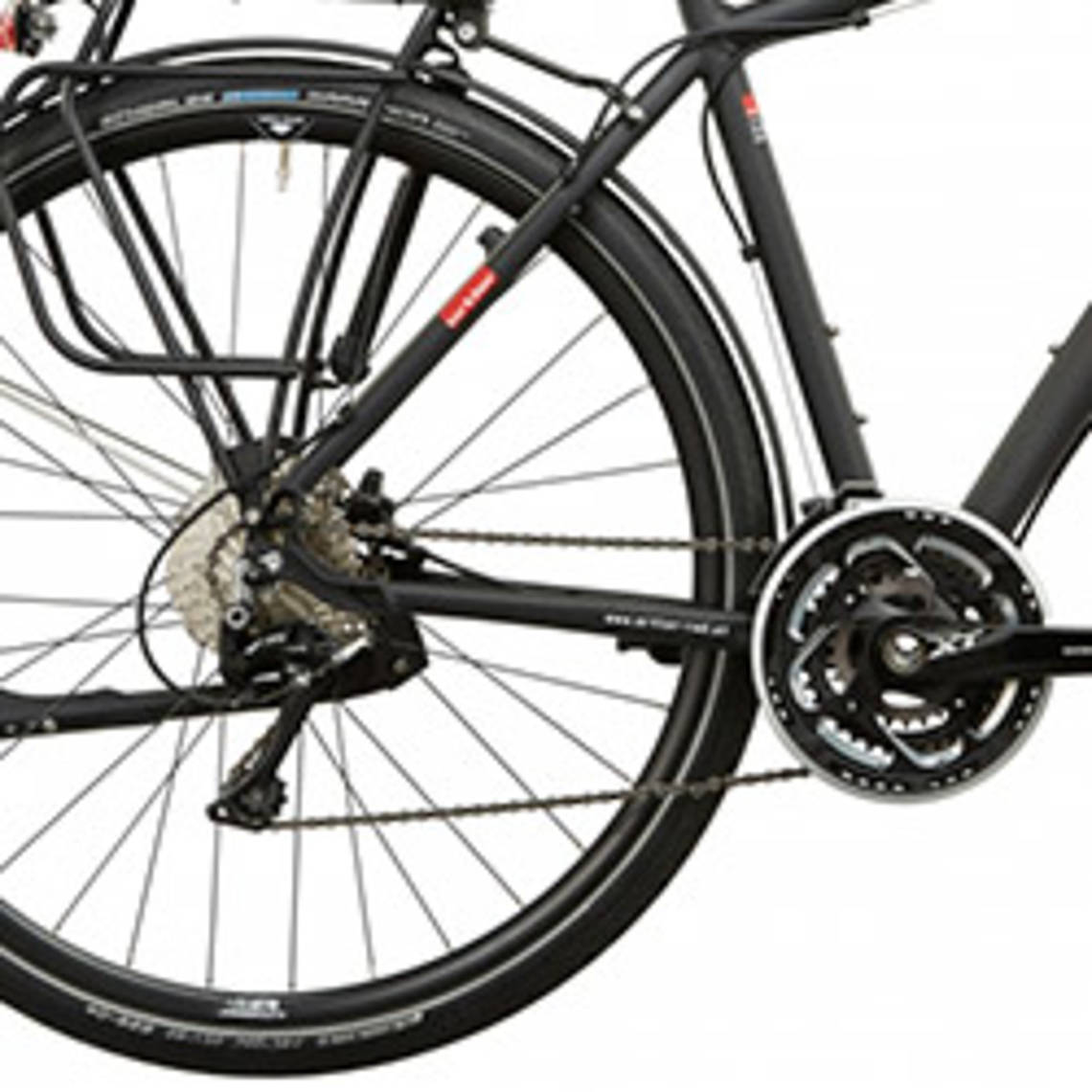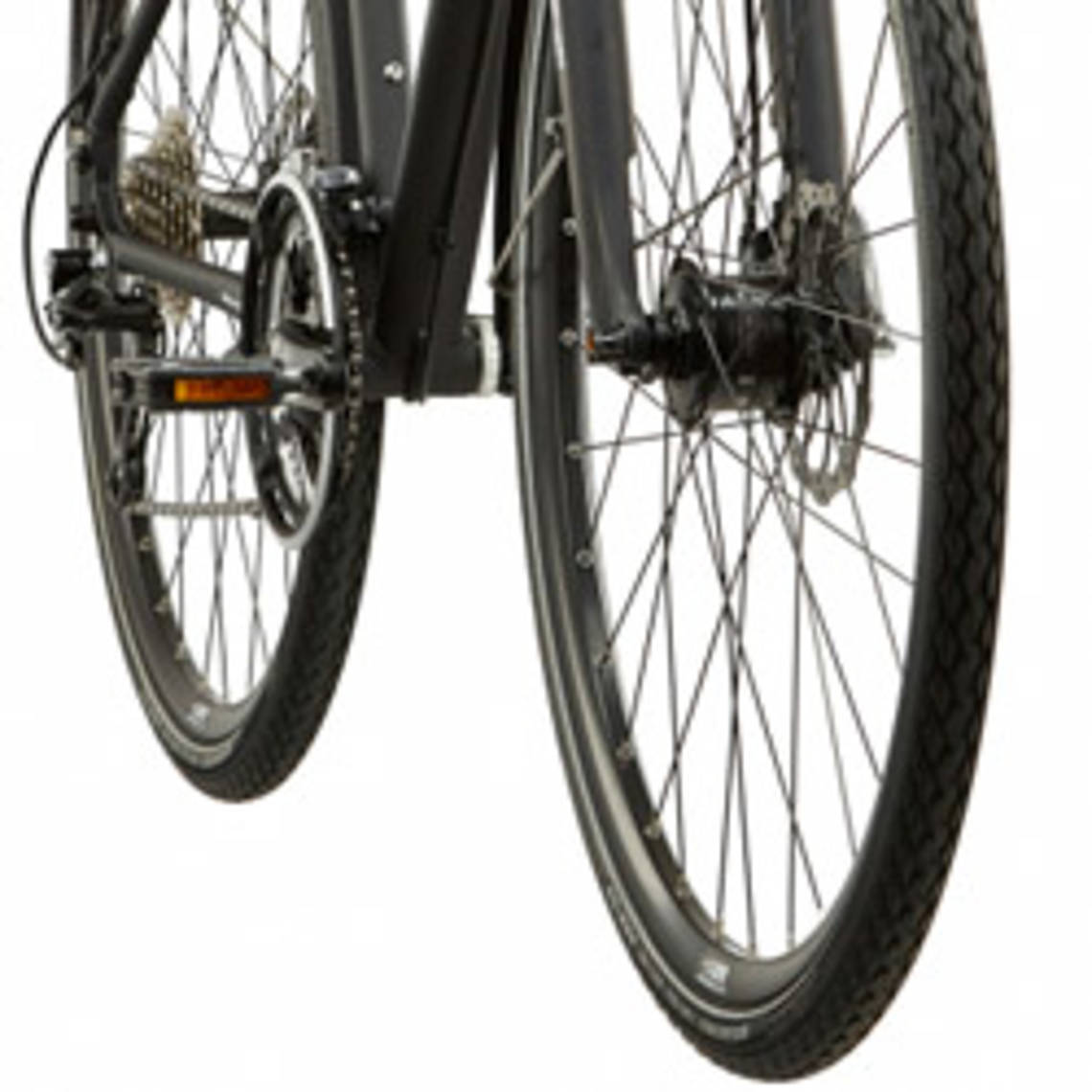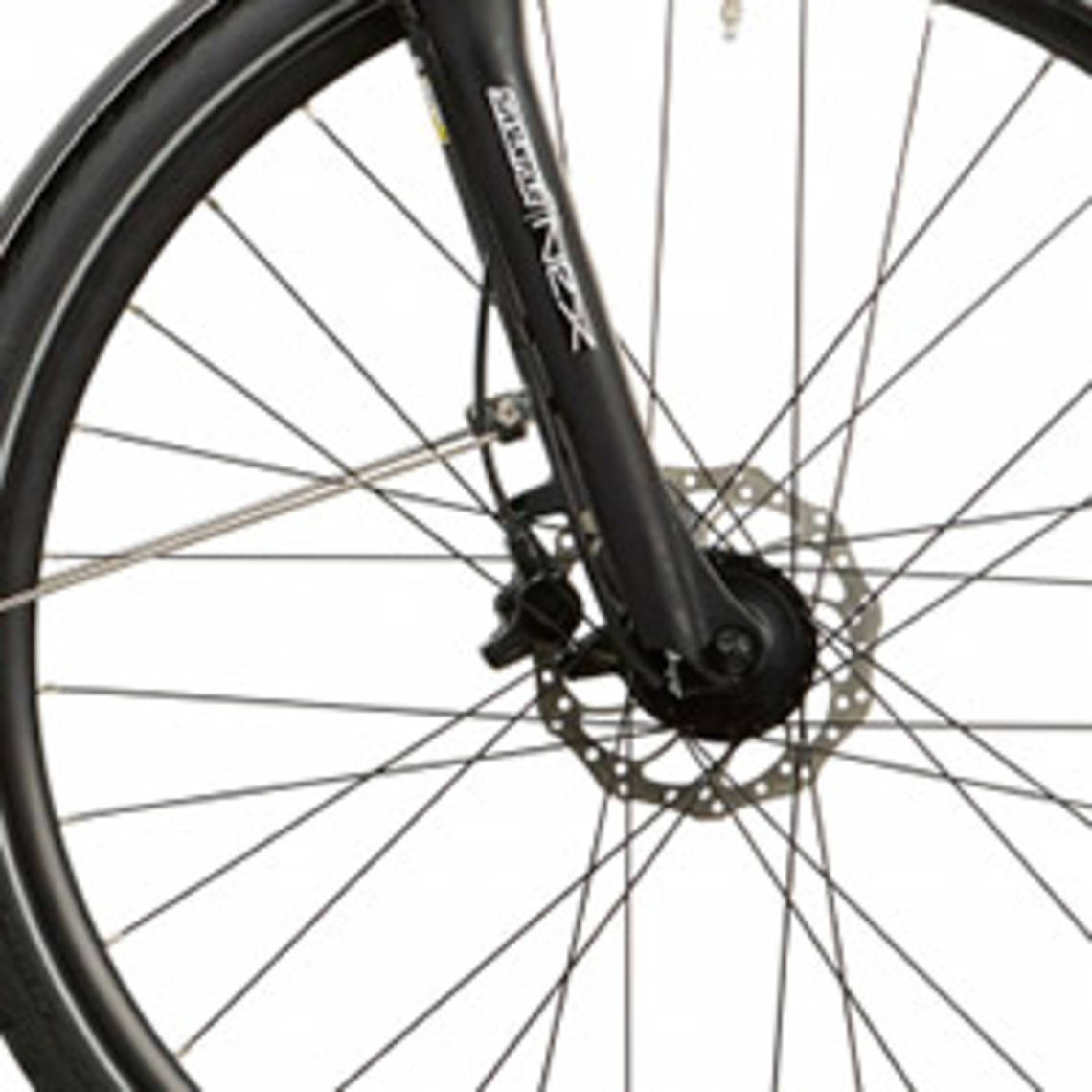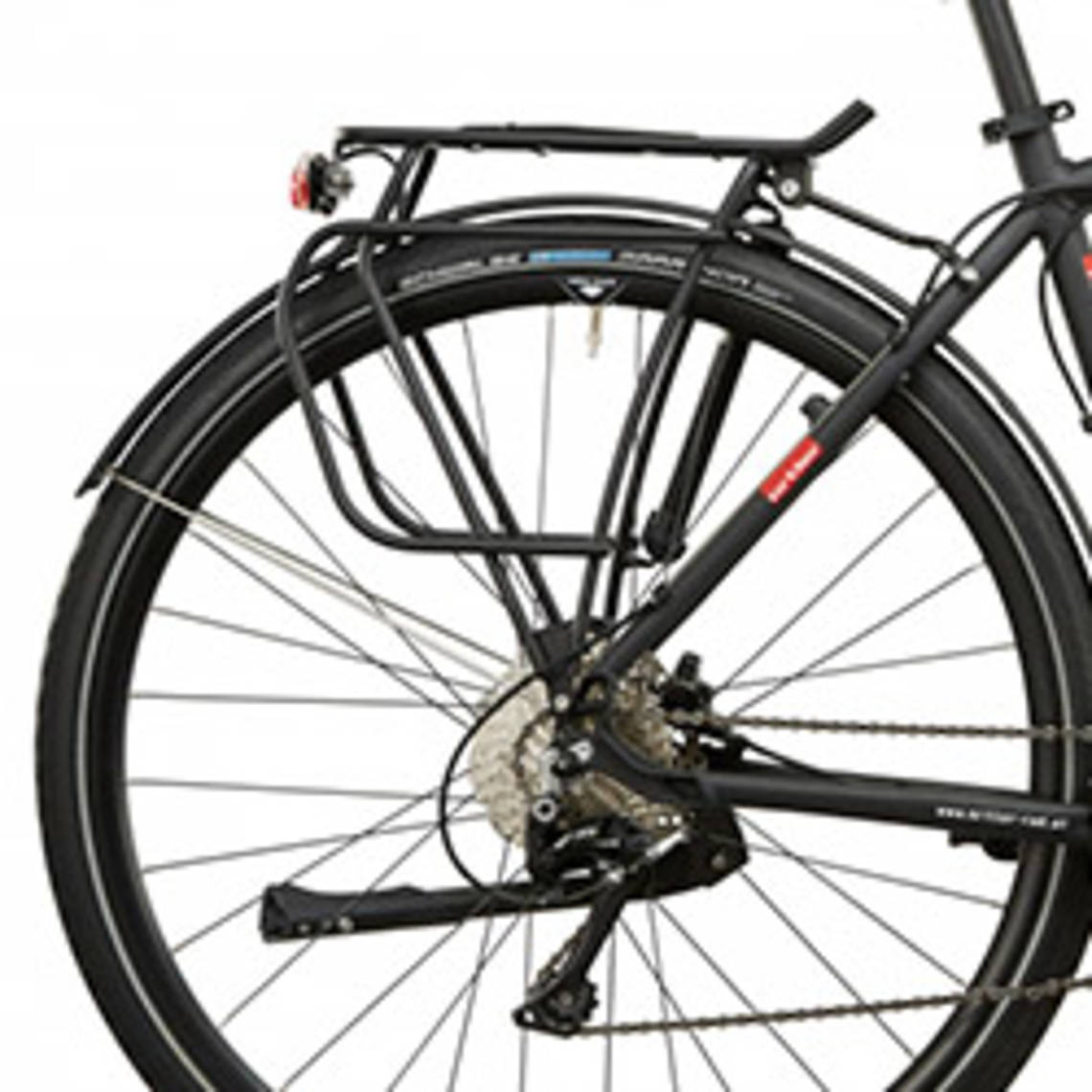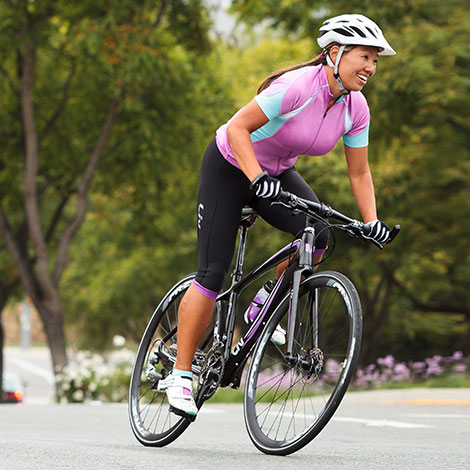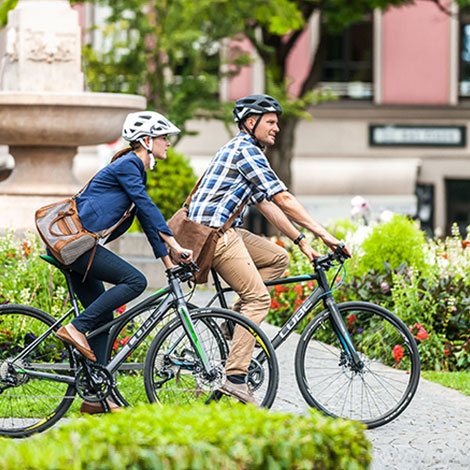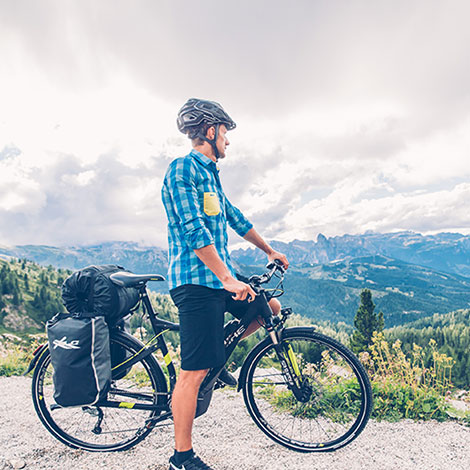TOURING BIKE GUIDE
Sporty roadbikes or mountainbikes usually get a lot of attention, in particular because these two evolve super quickly in terms of innovative technology. But these on-road and off-road experts are not the best choices in every situation and for mixed type of uses. A lot of people are looking for a bike that’s suitable for everyday use but also for long tours during the weekend. In this guide we would like to introduce you three types of bike whose main quality is their versatility and that make a really good job at short AND longrides.
Crossbikes, trekking bikes and touring bikes are true all-rounders: they are suitable for everyday use, leisure use and for longer trips. If you’re interested in getting one of them, keep reading! We provided you with some useful tips that will help you find the model that’s made for you, will meet your specific needs and price expectations.
Crossbikes, trekking bikes and touring bikes have qualities that are adapted to very different uses. They are all robust and comfortable and you can normally take each of those three types of bike on surfaced roads or off-road without any problem, but each of them has its specific strengths.
For those who like to take their bikes whenever then have a bit of spare time, but also use their bike quite regularly during the week for their daily journeys, the perfect bike is the cross bike. It is definitely the sportier/most dynamic bike of these three. This is the perfect bike for commuters, and for those who like to transform the after work ride into a nice workout!
Less sporty but perfect for an everyday use all year long, the trekking bike is the best choice if you using your bike in the city: it comes with complete equipment. This equipment allows you to use the trekking bike for longer trips as well: a very polyvalent bike!
The fans of longer bike tours (one week or more) which require bringing/carrying bigger bags and having a fully equipped bike should have a look at our Touring bike category. They are more stable and their structure allows them to carry a higher load. This luggage capability, proven components and solid chassis make it a work horse that is reliable to take you anywhere. It is not as fast as a cross bike, but definitely the good choice for those who want to ride far.
The price range by cross bikes, trekking bikes and touring bikes goes from around £300 to £3000 (and sometimes a lot more). The price usually varies based on quality, durability and weight of the different parts. Of course, the more durable and light the bike is, the more it costs. Apart from this, the differences between all the bike types are not equally important. Some features have to be of good quality, and money can be spared on some others without much remorse.
Frame and fork influence the sitting position, the handling and the comfort of any bike. Compared to sportier road bikes, they have a more upright position that offers comfort and a better view on the road. The frames are mostly made of aluminum or steel and provide a good compromise between stability and light weight. The frame of a trekking or a touring bike will be able to support a lot of luggage without vibrating or feeling “spongy”. Cross bikes and trekking bikes often have a suspended fork for more comfort. Touring bikes manufacturers often make the choice of not adding any suspended fork in order to lower the maintenance costs and the weight of the bike, but also to make it possible to add a luggage rack on the front wheel.
Most of the bikes are equipped with a derailleur with a broad range of gears (up to 30). Unlike the newest generation of mountain bikes and road bikes, the number of gears they have is a good indicator of how many different terrains they will be able to ride on comfortably. A nice shifting comfort can be found even on lower prices circuits. Cyclists who ride their bike mostly when the weather is good or only is the weekend can go for a cheaper drive train. But for those who spend more time on the road, the durability of a more expensive drive train is really an asset.
Most of the cross bikes, trekking bikes and touring bikes have 28“wheels with tires that are between 35 and 50 mm wide. Usually, trekking bikes have wider rims and tires than city bikes and road bikes for more comfort and more stability. Just like frames, the stiffest and most stable wheels offer a secured riding and show a nice behavior off-road. Tires that have a pattern that grips well will be perfect if you often ride on uneven surfaces like dirt and gravel roads. If you ride mostly on paved road, you can go for smoother tires.
Cross bikes have often disc brakes on the front and back wheels, just like mountain bikes. Trekking bikes are mostly equipped with rim brakes (often the simple but robust v-brakes) or disc brakes. The latter are the strongest and most reliable option: their braking power isn’t affected by rain and mud. Touring bike models are mostly equipped with rim brakes or mechanical disc brakes, because they can be quickly and easily repaired, which is important when you leave for a longer trip and you don’t want to be stopped by some technical problems.
While the cross bikes equipment is often limited to the essential, trekking bikes and touring bikes offer a complete equipment with lights, mudguards, luggage racks, stand etc. This way, you can be sure than all the different parts work together very well! In any case, it’s important to invest in very good quality products when it comes to the saddle, the lights and the grips.
Sitting position: from upright/relaxed to sporty/comfortable
When you’re going to sit a long time on the saddle and you want to be comfortable and relaxed, the sitting position you have on your bike is crucial. It is above all the frame size that determines it, but also the saddle model and a handlebar at the right height. Our size calculator gives you indications about the frame size that is adapted to your size and legs length depending on the type of bike. Compared to MTB and road bikes, trekking bikes and touring bikes offer a shorter and more upright sitting position. Usually, the sitting position is sportier on cross bikes.
It might seem that an upright sitting position would be the most comfortable option. But a slightly sportier position can be more convenient for the long-distance fans, because the weight of the body is distributed in a more balanced way between the front and the back wheel. The saddle should not only fit the cyclist buttocks but also fit the desired sitting position. If you sit upright, we would advise you larger saddle models. If you prefer sportier sitting position, a narrower saddle will be better on the long term. The most important thing is of course to choose a saddle that suits your body! For example, if you have wide sit bones, prefer to choose a wider saddle.
A height-adjustable stem allows you to adjust your sitting position really precisely. Ergonomic grips and a slight change in the handlebar position can also bring more comfort without any additional effort.
Cross bikes, trekking bikes and touring bikes at a glance
AGILE ALL-ROUNDERS FOR DAY TRIPS
Cross bikes are the lightest and most reduced every day bikes. They combine some of the essential characteristics of road bikes (for example the narrower tires) and of MTBs (suspended fork). The result is a very versatile bike with up to 30 gears derailleur, disc brakes and suspension, which together make a great combination for day trips. Thanks to their low weight and low roll resistance, they are also perfect for fast everyday journeys. It is generally possible to mount some equipment like bottle holder, luggage rack and mudguards on a cross bike. Our advice: lights and mudguards are really easy to mount and radically improve the everyday usability without affecting the road behavior.
Advantages:- low weight
- sporty character
- easy rolling tires
- lights, mudguards and luggage carrier can be easily mounted
ALL-ROUNDERS FOR THE DAILY JOURNEYS AND TOURS
Trekking bikes are the most versatile bikes. Whether you’re planning to go to work with your bike every day, to make long trips or a relaxed family tour on the weekend, it is possible with a trekking bike. It has all the equipment you might need: lights, luggage carrier, stand and mudguards are part of the package and make it suitable for the road traffic. They are often equipped with a suspended fork and disc brakes and are therefore also suitable for tours with luggage. Thanks to their upright position which make the riding really comfortable, you will enjoy each of your trips!
Advantages:- Possibility to take a lot of luggage with you thanks to the standard luggage carriers
- Upright and comfortable sitting position
- Complete equipment: lights, stand, bell &# co
- Universal use: perfect for the way to the office or for weekend trips
Touring bikes – Long-distance and luggage transport experts
For many reasons, touring bikes can be described as an “extreme version” of the trekking bike. Touring bikes do not only have a particularly stable frame: they are equipped with proven and if possible maintenance free parts that have been tried and tested for their robustness. Indeed, who wants to be stopped by a defect on the way of a long trip? They can bear a rather high load, thanks to the luggage carriers mounted on the back wheel and often also on the front wheel. Their riding characteristics are optimized for luggage transport. For more comfort, the rider must have the possibility to change grip position during long tours. Some models are even equipped with a road handlebar (generally mounted much higher than on a road bike) or with a more or less straight handlebar which can be combined with ergonomic grips and bar-ends.
Advantages:- Possibility to take a lot of luggage with you thanks to the standard luggage carriers
- extensive and if possible maintenance free equipment for tours
- comfortable sitting position for long tours
- ride characteristic optimized for the transportation of luggage






























